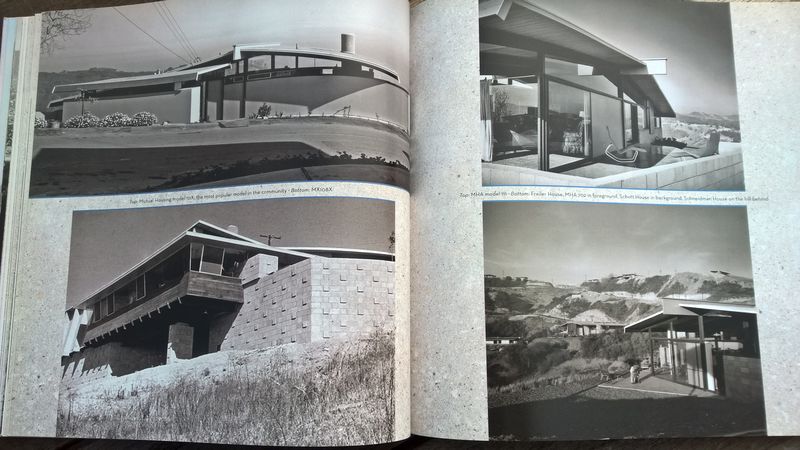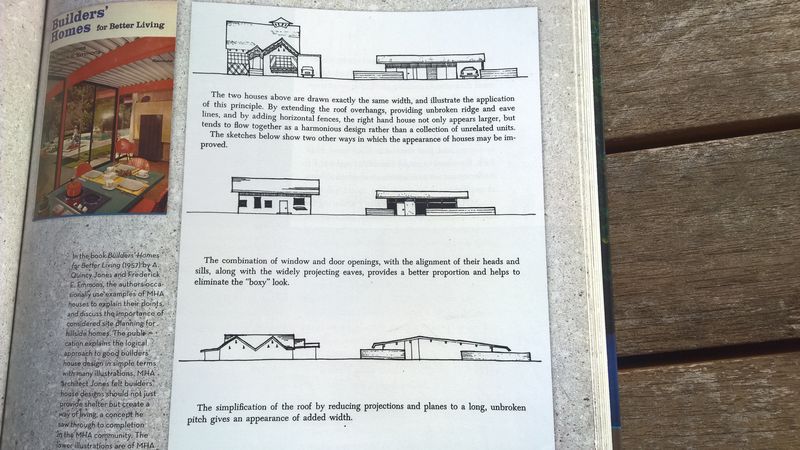 Crestwood Hills, Los Angeles, California
Crestwood Hills, Los Angeles, California
So why are we still stuck in very traditionally shaped houses? After the 50s/60s/70s and their avant-garde architecture? After decades of amazing progress with material? With possibilities that were simply not possible back then?
Why are we still making houses like that little stupid drawing we all did when we were kids?
Simply put, because of religion and its kids (misogyny, racism).
To finance a house, you need a bank to loan you money. Banks are more often than not led by conservative, religious folks. At first when people came to them with futuristic houses looking like nothing else, those bankers mumbled but accepted them: a majority of people dreamed of new things after two world wars, and house shortage was too strong to not sign off whatever housed people. Pure necessity.
The demographics of people looking for modern architecture have always been full of non-religious, progressive folks. People trying something new, questioning things. People not afraid of breaking from the past. People mingling with different races. People not going to church. Women with opinions and power.
Bankers, more often than not, hated all that. So they would block mortgages. Very quickly rules and laws voted by powerful, wealthy conservative folks often connected to banks, made financing or building modern architecture difficult if not impossible.
 Concept and plans of houses on a hill.
Concept and plans of houses on a hill.
Crestwood Hills in Los Angeles had to go all the way to Washington DC to make themselves heard and get their loans approved! Many people couldn’t wait that long and withdrew their plans for a modern house.

There was also, it seems, the idea that a house without a clear entrance and a lot of privacy in the backyard was an instrument for adultery. Which, in our current modern days of blatant affairs and sophisticated toys, is a laughable concern. Especially if you add what we know is happening in churches and boys clubs but a-ny-way.
 Built houses in Crestwood Hills. Privacy, community and views. Yessir.
Built houses in Crestwood Hills. Privacy, community and views. Yessir.
The first community/cooperative of that kind started in 1945 in the East. It was called Usonia. The same reasons impaired the effort: banks dragging their feet and the requirements to run a successful coop, which demands a lot of work outside of people’s lives, being too much. A few amazing dozen houses were built though and like Crestwood, the spirit is still alive.
 Illustrations showing how for the same size a low profile design looks larger and flows better.
Illustrations showing how for the same size a low profile design looks larger and flows better.
Through those post-war decades Joseph Eichler was the most successful by far, but that’s only because he was a real estate developer: he was able to build whatever he wanted and it turns out being modern houses designed for good Quality of Life. He didn’t have to fight contractors to build something different than a kid’s drawing. He paid them. He built around 10,000 Eichler houses.
Modern houses from 1950s and 1960s designers are interesting because they fit our 2020s lives really well. Nice proportions, built-ins and open floor plans match our digital habits which are 20 years old now. We just need to sit down with our devices and we’re good to go for hours. No need for dining room, game room, family room and all that rigid layout from the past.
Instead of exploring new layouts connecting us with nature that we so need, we either live on top of each other in apartments acting like we’re in houses (aka we don’t respect our neighbors), or we live in houses with those living rooms open to the street, which we close with curtains at all times for privacy or because we’re done looking at that boring silver F150. Let’s add an intense flood light to make it look good /s.
And everything is made out of the cheapest material you can possibly get away with.
We are so oddly uncreative, unsophisticated and anti-progress with this housing thing. It’s crazy.
(photos from Cory Buckner’s book, Crestwood Hills, The Chronicle of a Modern Utopia)




 Crestwood Hills, Los Angeles, California
Crestwood Hills, Los Angeles, California Concept and plans of houses on a hill.
Concept and plans of houses on a hill.
 Built houses in Crestwood Hills. Privacy, community and views. Yessir.
Built houses in Crestwood Hills. Privacy, community and views. Yessir. Illustrations showing how for the same size a low profile design looks larger and flows better.
Illustrations showing how for the same size a low profile design looks larger and flows better.

